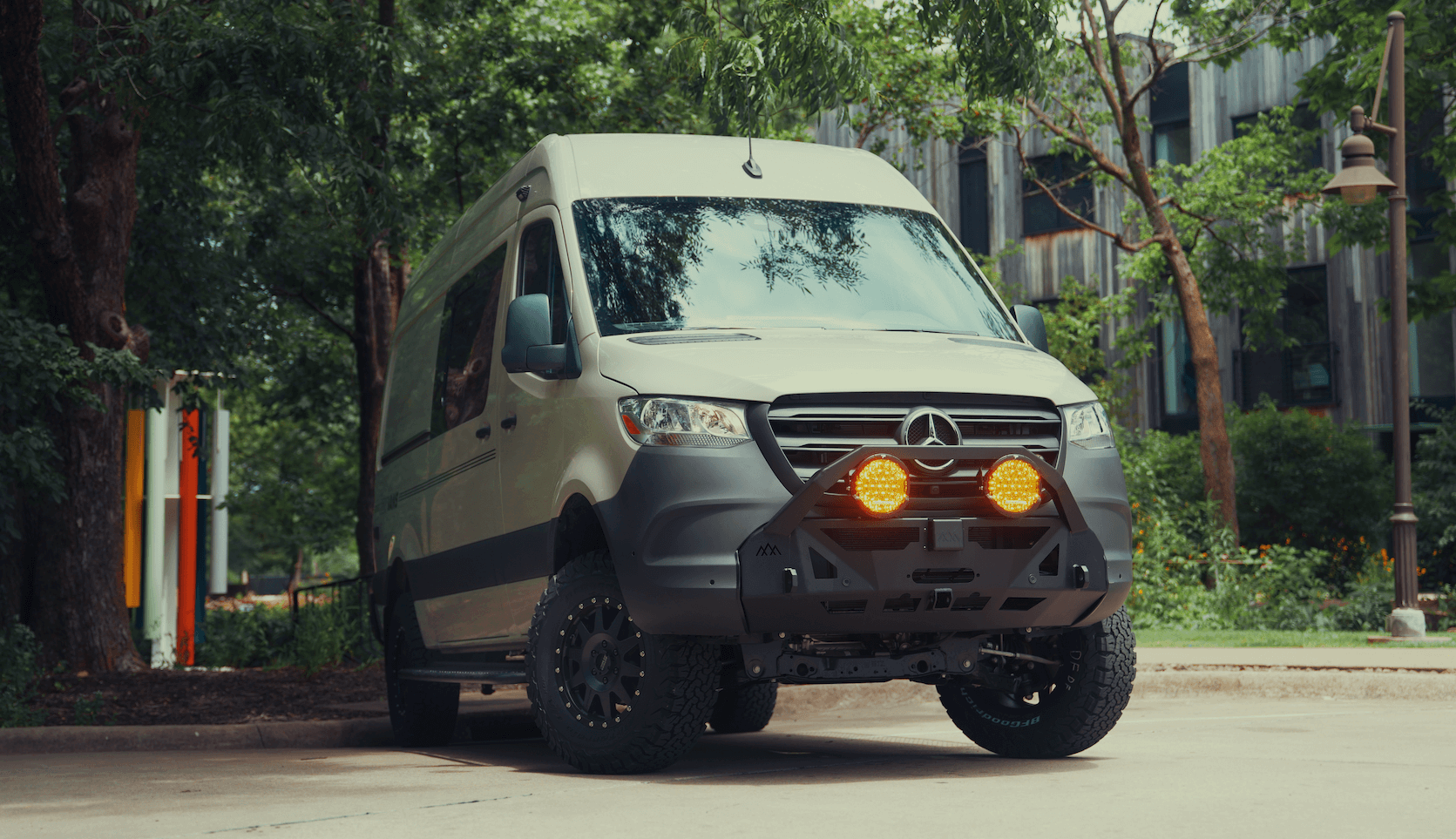Recreational Vans

When people say regular outlets, they usually mean standard North American 120 volt receptacles that you find at home. Most are NEMA 5 15 rated for 15 amp circuits, and some are 20 amp with a different blade pattern. In a van, these outlets can be installed in cabinets or walls just like in a house, but the power behind them is not the same utility grid you have at home.
GFCI protection is essential anywhere water might be present, like galleys and bathrooms. A common approach is to place the first outlet on a circuit as a GFCI device and feed the downstream outlets from its load terminals. Modern builds may also use combination GFCI AFCI breakers for enhanced protection.
Use tamper resistant receptacles for safety. In damp areas or near doors, weather resistant versions and in use covers help the outlets survive condensation and the occasional splash.
There are two primary sources for household style power in a camper van.
Many vans use both. A transfer switch selects shore power when available and switches to inverter power when unplugged. Never combine sources. The transfer switch isolates them so only one source feeds the system at a time.
Start with your largest simultaneous loads. Add up watts, then size the inverter with headroom. If you want to run a 900 watt microwave and a 1200 watt induction zone at the same time, you are already at roughly 2100 watts before factoring startup surges. A 3000 watt pure sine wave inverter is a common choice for full time rigs because it handles clusters of loads without groaning.
Batteries determine how long outlets can run those loads. Convert watts to amps at the battery. At 12 volts, a 1000 watt load draws about 83 amps before inverter losses. With a 200 amp hour lithium bank at 80 percent usable capacity, you have around 160 amp hours available. That 1000 watt appliance could drain the bank in under two hours. Larger banks, such as 400 to 600 amp hours at 12 volts or a 24 volt architecture, stretch run time and reduce cable size.
Charging is the other side of the equation. Solar, alternator charging through a DC to DC charger, and shore power charging through an onboard charger all refill the battery bank. The more you pull, the more you must put back.
Treat AC in a van with the same respect as a small house system. Use a breaker panel with properly sized breakers for each branch circuit. Follow manufacturer guidance for neutral to ground bonding. In most mobile systems, the bond occurs inside the source device and only at one location. A pure sine inverter with an internal switching bond usually handles this when it becomes the source. When on shore power, the bond is provided upstream at the pedestal. The transfer switch ensures there is never more than one bond.
Use marine grade wire or THHN in protected conduit where appropriate, and size conductors for voltage drop and breaker ratings. Protect circuits with GFCI at the first outlet or with GFCI breakers. Label everything. Clear labeling turns a mystery box into a system you can troubleshoot on a rainy night.
Household outlets are convenient, but plan their use around battery reality and breaker limits.
Many daily needs do not require AC at all. Charging phones, tablets, and even modern laptops can happen through USB Power Delivery at 12 volts. A 12 volt fridge avoids inverter losses and runs quietly. Fans, lights, and water pumps are native DC devices and should remain on the DC side of the system. Every time you skip the inverter, you save energy and reduce heat in your electrical bay.
A well designed AC system makes your outlets feel boring in the best way. That means the right size inverter, a clean transfer switch setup, a tidy breaker panel, and outlets grouped by use case. The result is predictable performance and fast troubleshooting when something trips.
If you want outlets that behave like home, professional design and installation will get you there. See how we approach full cabin systems on our recreational vans page. For bespoke layouts and premium electrical packages built around your appliance list, explore our custom build van offering. Looking for a platform that qualifies for financing with thoughtful electrical already planned, review our mainstream vans options.
Final thoughts. Yes, you can use regular outlets in a camper van, and with the right plan they can power coffee mornings, remote workdays, and movie nights without drama. The keys are a pure sine inverter sized to your real loads, a battery bank with honest capacity, safe wiring with GFCI protection, and a transfer switch that keeps sources separated. Build around how you actually live, not only a parts list, and those outlets will feel like home wherever you park.
If you want dependable household power without the guesswork, we can help. Start with a simple plan that matches your appliances, travel habits, and budget. Explore recreational vans, learn our custom build process, or browse finance friendly platforms to begin your journey.
Ready for quiet, reliable household power in your van? Our team designs and installs safe AC systems that match your appliances, travel style, and budget. Tell us how you camp, and we will engineer the right inverter, batteries, and outlets so everything just works. Start your build plan today.
ADDRESS:
6159 E Huntsville Rd, Fayetteville, AR 72701
PHONE:
(479) 326-9200
EMAIL:
info@ozkvans.com